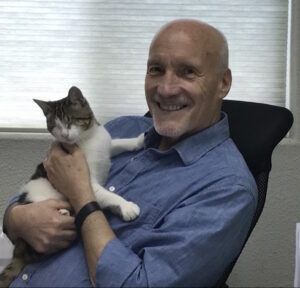 As someone deeply passionate about animal welfare, particularly our feline friends, I’ve encountered numerous cats, each with their own enigmatic personalities and behaviors. Despite their ubiquity in our lives, there are still aspects of cats that often escape our notice or understanding. Let’s explore ten intriguing insights into the mysterious world of cats: Continue reading “10 Things Most People Don’t Know About Cats”
As someone deeply passionate about animal welfare, particularly our feline friends, I’ve encountered numerous cats, each with their own enigmatic personalities and behaviors. Despite their ubiquity in our lives, there are still aspects of cats that often escape our notice or understanding. Let’s explore ten intriguing insights into the mysterious world of cats: Continue reading “10 Things Most People Don’t Know About Cats”
To declaw or not to declaw by Ed Boks
I have been asked to explain my comments at a recent Santa Monica City Council meeting. The Council was deliberating over whether or not to enact a Ban against Cat Declawing within the city limits of Santa Monica. A similar measure was defeated in Malibu two weeks earlier.
My position is a difficult one, but an honest one and I think my comments speak for themselves. I don’t stand alone in my position, it is shared by the San Francisco SPCA who released the following statement, “Our mission is to save animals’ lives and we understand that, in some instances, [declawing] may be the only way to prevent abandonment, relinquishment, or euthanasia.”
The San Francisco SPCA issued the above statement denouncing San Francisco’s move to ban declaws even though the group advocates against the procedure. Being against a Ban is NOT being for declawing. I share the SF SPCA’s concern that frustrated owners with no option to declaw cats will be forced to decide to abandon or relinquish their pet.
“Keep it legal, keep it rare” is the position of virtually every national animal welfare and veterinary association. It is also the position of most shelters committed to reducing the number of animals killed in their communities. The suggestion that most European countries have already enacted a ban is disingenuous.
The Los Angeles Chief Legislative Analyst Report to the LA City Council busted three myths propagated by Ban Proponents. He found that declawing is “not cruel” (a position I am not prepared to take). He found that declawed cats relinquished to LA shelters are “a rarity”. And he called into question the City’s authority to oversee the practice of veterinary medicine, and said that even if the City has this authority, it does not have the resources or staff to do so.
To further clarify my “last resort”, and I do mean LAST RESORT position, I am sharing my comments from the recent Santa Monica City Council meeting to help explain and support my position. Again, I do NOT support declawing, however, I don’t support a Ban either because of the unintended consequences that are sure to follow:
“Good evening. My name is Ed Boks and I am here as an animal welfare advocate with nearly 30 years experience in animal care and control and over 12 years experience managing three of the largest animal shelter systems in the United States, including New York City and Los Angeles. As an experienced shelter manager, I can tell you that an uncompromising ban on cat declawing in the City of Santa Monica will result in more cats abandoned on your streets and more cats relinquished and killed in your shelter.
Like Ban Proponents, I abhor the practice of Declawing, but I abhor the abandoning, relinquishing and killing of cats even more, and I’m here to tell you that is what a Ban will lead to.
It is interesting that you are told that Declawing is mutilation by the same people who embrace other forms of mutilation! Some Ban Proponents approve cutting the tip off the ear of otherwise healthy feral cats for the convenience of being able to identify them in a colony.
Other Ban Proponents promote invasive surgery for the convenience of reducing dog and cat populations; another form of mutilation in the minds of some.
And probably everyone in this room, on both sides of this debate will agree that these forms of “mutilation” are acceptable. Why? Because we know they save lives!
In the same way, when a veterinarian performs a declaw surgery as a last resort she is saving a life! You take that life-saving option away from a cat guardian and you will force them to relinquish their pets to a shelter, who, at a cost to the City, will try to re-home them, and if they can’t – these cats will be killed. Why, when we are all trying so hard to end the killing in our shelters, would we want to create another reason to kill?
In Malibu, Mayor Stern voted against a Ban explaining that he would have taken his cat to the Pound if he couldn’t have her declawed because his wife’s health is at serious risk to a cat scratch. Thank God he had this option!
Please don’t limit the life-saving tools available to licensed veterinarians or second guess their professional judgment.
When performed as a last resort, declawing is a life saving remedy that keeps cats and people together, cats who might otherwise be subject to abuse, abandonment, or death.
Please vote NO to a Ban. A No Vote is a life saving vote. Thank you.”
